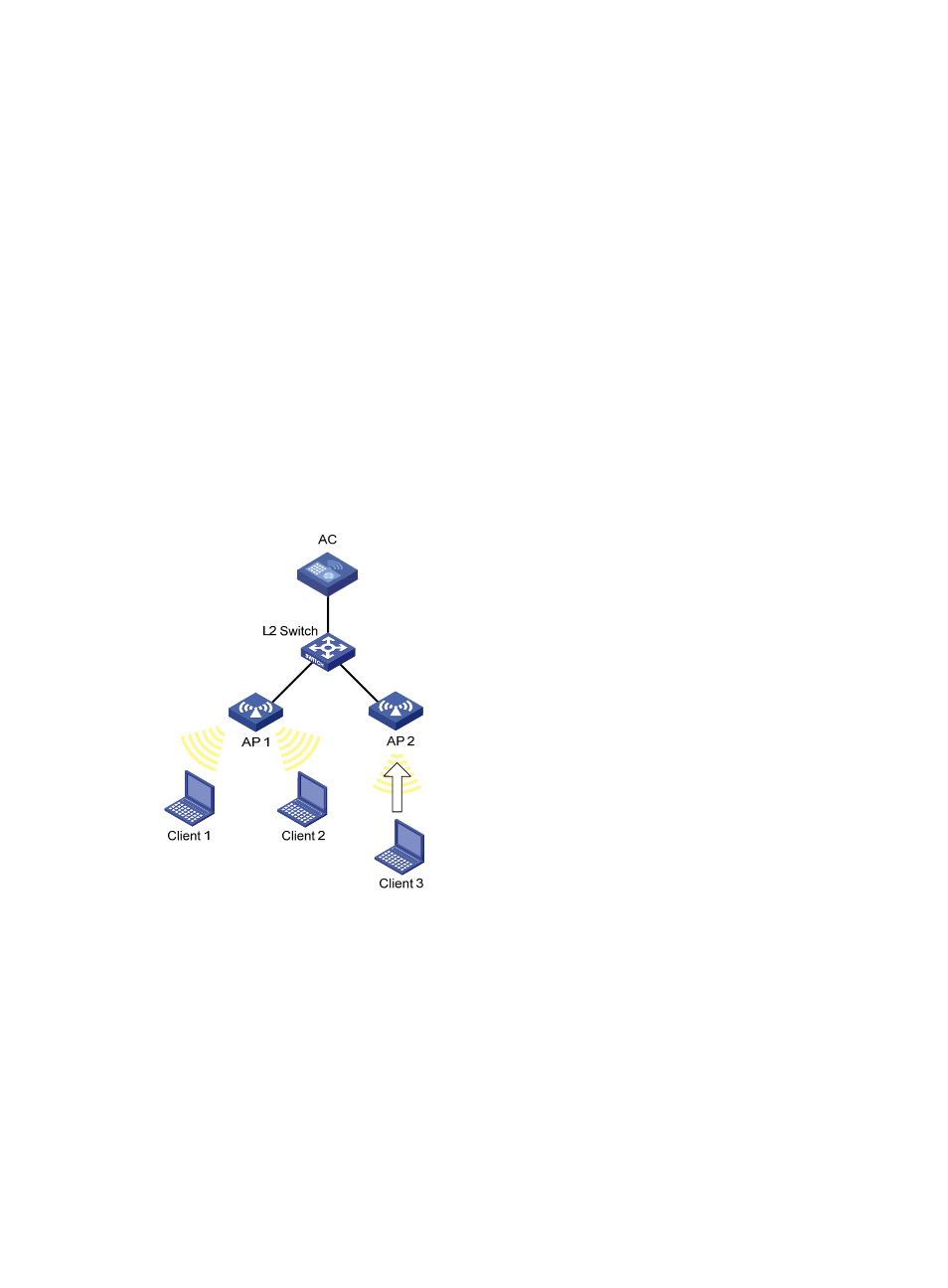Verifying the configuration, Configuration guidelines, Network requirements – H3C Technologies H3C WX3000E Series Wireless Switches User Manual
Page 611: Configuration procedure

595
Verifying the configuration
Client 1 is associated with AP 1, and Client 2 through Client 6 are associated with AP 2. Because the
number of clients associated with AP 1 reaches 5, and the session gap between AP 2 and AP 1 reaches
4, Client 7 is associated with AP 1.
Configuration guidelines
An AP starts session-mode load balancing only when both the maximum sessions and maximum session
gap are reached.
AP-based traffic-mode load balancing configuration example
Network requirements
•
As shown in
, all APs operate in 802.11g mode. Client 1 and Client 2 are associated with
AP 1, and no client is associated with AP 2.
•
Configure traffic-mode load balancing on the AC. The traffic threshold is 3 Mbps that corresponds
to the threshold value of 10 in percentage, and the traffic gap is 12 Mbps that corresponds to the
traffic gap value 40 in percentage.
Figure 631 Network diagram
Configuration procedure
1.
Before you configure load balancing, configure AP 1 and AP 2 on the AC to establish a
connection between the AC and each AP.
For the related configuration, see "Configuring access services."
2.
Configure traffic-mode load balancing:
a.
Select Advanced > Load Balance from the navigation tree.
b.
On the Load Balance tab, select the Traffic mode, enter the threshold 10, and the traffic gap
40.
c.
Use the default values for Max Denial Count and RSSI Threshold.
d.
Click Apply.